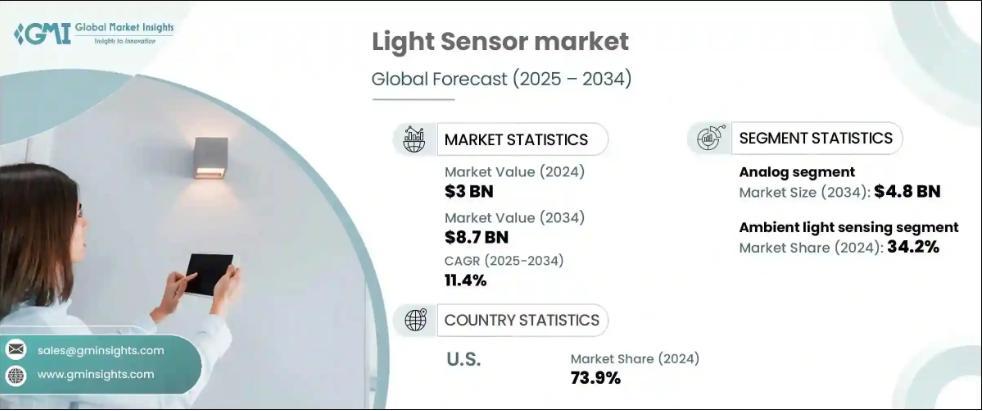Outline
- Introduction
- Understanding Photocell Technology
- Types of photocells commonly used in outdoor lighting
- What are Relays and How They are Used in Photocell Systems to Control Lighting
- Different types of relays used with photocells
- Advantages of Using Relays in Photocell Systems
- How to Choose the Right Relay for Photocell Systems
- The Bottom Line
Imagine strolling down a well-lit street at night, feeling safe and secure. Or, your home glowing warmly after dark, adding a touch of elegance. Outdoor lighting is essential in our lives. But leaving those lights on all night can be a big drain on energy and our wallets.
Thankfully, today’s tech offers ways to be more energy-efficient. These solutions are not only sustainable and eco-friendly, but they can also help you save on energy bills. Among these measures, the use of photocells is becoming the norm.
It works hand-in-hand with a special relay switch to create smart systems. These systems automatically control your outdoor lights.
Let’s dive into how this duo helps us light up the night while keeping our energy use and costs down.

Understanding Photocell Technology
Photocells are also known as photoresistors or light-dependent resistors (LDR). They are electronic components that change their resistance based on how much light they get. In other words, they are sensors that can tell if it’s bright or dark around them.
Photocells work on the idea of photoconductivity. This means their ability to conduct electricity changes when exposed to light. The more light there is, the more electrons will be excited, leading to a decrease in resistance and, eventually, the light.
Contrarily, when there is less light, the light emitted by photocells increases with an increase in resistance. This change in resistance is used to determine the light levels in the environment.
Types of photocells commonly used in outdoor lighting
There are two main types of photocells used in outdoor lighting. These are cadmium sulfide (CdS) photocells and silicon photocells.
Cadmium sulfide (CdS) photocells
CdS outdoor photocell sensors are the traditional choice for outdoor lighting. They are inexpensive and sensitive to a wide range of light wavelengths. This makes them suitable for various outdoor lighting needs.
Silicon photocells
Silicon photocell light switches are newer and more technologically advanced options. They offer greater accuracy and reliability compared to CdS photocells. They are also more resistant to temperature changes and have longer lifespans.
What are Relays and How They are Used in Photocell Systems to Control Lighting
Relays are electronic switches that allow a small electrical signal to control a much larger electrical load. To put this simply, They let two separate electrical circuits connect even though they aren’t directly linked.

How Relays are Used in Photocell Systems
Photocell systems rely on relays to control the operation of outdoor lighting. Here’s how they work.
The dusk to dawn photocell detects the ambient light level and sends a signal to the relay. When the light level drops below a certain point, usually at dusk, the photocell activates the relay.
Once activated, the relay acts as a switch, turning on the outdoor lights connected to it. As daylight increases and the light level rises above the threshold, usually at dawn, the photocell signals the relay to deactivate, turning off the lights.
This automated system ensures the outdoor lights are turned on when it’s dark and turned off when it’s bright, without requiring manual intervention.
Different types of relays used with photocells
In photocell systems, different types of relays are used. However electromechanical and solid-state relays are most common. They play crucial roles in controlling outdoor lighting. Below is a brief discussion about these.
Electromechanical Relays
They’re old-school switches with moving parts. In these relays, when a photocell detects darkness, it sends a signal. This signal activates the mechanical relay. It consists of physical components like springs and contacts that move to open or close the circuit, turning your outdoor lights on or off.
Electromechanical relays have been used for ages in photocell lighting systems. Their straightforward design makes them reliable workhorses.
Solid-state relays
Solid-state relays control the flow of electricity in a circuit using semiconductor switching. Traditional relays have mechanical parts. In contrast, solid-state relays do not have moving components.
This makes them durable. No moving parts means less wear and tear. Additionally, solid-state relays respond quickly when switching circuits on or off. They switch electrical loads more efficiently than mechanical relays.
These relays are more suited for applications needing frequent switching or precise load control. Due to their reliability and performance, solid-state relays have gained popularity in photocell systems.
Advantages of Using Relays in Photocell Systems
The use of relays in photocells could yield various benefits. Some of these are discussed below.
- Safety: Relays ensure that outdoor lights only turn on when it’s dark. By providing the right amount of illumination at night they help to keep the surroundings safe and secure.
- Energy efficiency: Based on natural light, relays control when outdoor lights activate. This reduces electricity consumption, eventually saving some good bucks.
- Long life span: Relays minimize the operating time of outdoor lights. This results in less wear and tear on the photocells, eventually extending the lifespan of the lighting fixtures.
- Efficient control: By offering minimal manual intervention, relays provide simple and straightforward outdoor lighting management.
- Scalability: You can simultaneously control multiple lighting fixtures using relays. This suits diverse outdoor setups from residential to commercial installations.

How to Choose the Right Relay for Photocell Systems
When choosing the relay for photocell systems, factors like load capacity and compatibility are crucial. Below are some important considerations while choosing relays for your photocell system.
- Determine the electrical needs of your lighting fixtures to ensure the relay can handle them.
- Check if the relay works with the voltage and current levels of your existing setup.
- Consider the environment where the relay will be installed, making sure it can handle outdoor conditions like temperature changes and moisture.
- Look for relays that perform well and are easy to install, to simplify setup and maintenance.
- Finally, cost and warranty should be considered in making a good decision.
If you want one one-stop solution with exceptional quality photocells, Chiswear is recommended. Their photocells are high-tech, cost-effective, reliable, and efficient.
Further, they have a vast collection of photocells including NEMA photcells, long-join photocell, zhaga long-join, and others. You can choose what suits you best according to your needs and budget considerations.
The Bottom Line
Integrating relays with photocell technology provides a useful way to improve outdoor lighting efficiency. By automatically controlling lighting based on natural light levels, relays help save energy, reduce costs, and enhance safety. Choosing the right relay can optimize outdoor lighting systems for maximum effectiveness and sustainability
External Links
- https://www.electronicsforu.com/technology-trends/learn-electronics/ldr-light-dependent-resistors-basics
- https://www.acuitybrands.com/who-we-are/acuity-brands-lighting/dtl/-/media/abl/acuitybrands/files/dark-to-light/dtl-cadmium-sulfide-vs-silicon.pdf
- https://relays.weebly.com/electromechanical-relays.html
- https://en.wikipedia.org/wiki/Solid-state_relay
- https://tense.com.tr/en/product_categories/photocell-relays/






